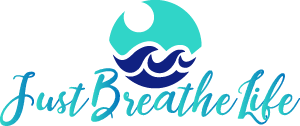How Unplugging Can Reconnect You with Yourself
In today’s fast-paced, hyper-connected world, the average professional spends over 11 hours a day on screens—yet many feel more disconnected than ever. Between constant notifications, overflowing inboxes, and endless scrolling, our relationship with technology often leaves us feeling drained, unfocused, and even isolated.
If you find yourself compulsively checking your phone, struggling to focus at work, or feeling mentally exhausted from digital overload, it might be time for a digital detox. But don’t worry—this isn’t about abandoning technology altogether. Instead, it’s about creating healthier boundaries so you can reclaim your focus, reduce stress, and reconnect with yourself.
In this guide, we’ll explore the hidden costs of constant connectivity, the benefits of unplugging, and practical strategies to help you detox from digital distractions—without compromising productivity.
The Hidden Cost of Constant Connectivity
1. Mental Overload
- Excessive screen time leads to cognitive fatigue and reduced ability to concentrate (American Psychological Association).
- Multitasking between emails, messages, and social media lowers productivity by up to 40% (Harvard Business Review).
- The brain becomes overstimulated, making it harder to process information and think creatively.
2. Emotional Impact
- Constant digital consumption increases stress and anxiety (National Institute of Mental Health).
- Social media triggers comparison syndrome, leading to lower self-esteem and dissatisfaction.
- The need for instant responses creates a sense of urgency and pressure, making relaxation difficult.
3. Physical Effects
- Screen fatigue causes headaches, dry eyes, and disrupted sleep cycles (Mayo Clinic).
- Poor posture from extended device use leads to chronic back and neck pain.
- Blue light exposure interferes with melatonin production, leading to poor sleep quality (Harvard Health Publishing).
The Benefits of a Digital Detox
1. Reclaiming Focus & Productivity
- Less digital clutter means fewer distractions and improved workflow.
- Deep work sessions become more efficient and rewarding.
- You regain control over your time rather than being reactive to notifications.
2. Strengthening Real-World Connections
- More meaningful conversations with colleagues, family, and friends.
- Increased presence in social situations, reducing “phubbing” (phone snubbing).
- Improved relationship satisfaction by being fully engaged in moments.
3. Enhancing Mental Clarity & Emotional Well-being
- More self-awareness and less external noise competing for attention.
- Reduced stress and anxiety from the pressure of constant digital engagement (American Psychological Association).
- A greater sense of personal fulfillment and work-life balance.
Practical Strategies for a Digital Detox
1. Start Small with Micro-Detoxes
- Set screen-free times, like the first and last hour of your day.
- Use “Do Not Disturb” mode during focus hours.
- Implement the 20-20-20 rule: Every 20 minutes, look at something 20 feet away for 20 seconds.
2. Create Tech-Free Zones
- Designate areas like the bedroom and dining table as screen-free.
- Keep your phone out of sight during meetings to encourage engagement.
- Use an alarm clock instead of your phone to avoid early-morning scrolling.
3. Replace Scrolling with Mindful Activities
- Read a book instead of reaching for your phone.
- Engage in meditation, journaling, or creative hobbies.
- Spend time outdoors or exercising to clear your mind.
4. Set Up a Social Media Cleanse
- Unfollow or mute accounts that cause stress or comparison.
- Use apps like Freedom or Offtime to limit time spent on social media.
- Schedule designated times for social media rather than checking it throughout the day.
5. Plan a Full Digital Detox Weekend
- Inform colleagues and family about your unplugged time.
- Plan activities that don’t involve screens, like hiking, cooking, or visiting a museum.
- Consider an off-grid retreat to immerse yourself in nature.
Overcoming Common Barriers to Unplugging
1. Fear of Missing Out (FOMO)
- Reframe your mindset to JOMO (Joy of Missing Out)—embracing presence over updates.
- Remind yourself that the world doesn’t stop when you log off.
- Focus on quality interactions over quantity.
2. Work Commitments
- Set clear digital boundaries, such as no work emails after 7 PM.
- Use email autoresponders during detox periods.
- Encourage teamwide tech-free breaks for better collaboration.
3. Breaking the Habit Loop
- Replace the habit of checking your phone with a healthier alternative (stretching, deep breathing, etc.).
- Track screen time usage with built-in phone settings.
- Celebrate small wins and reward yourself for reducing screen time.
Maintaining a Balanced Relationship with Technology
1. Practice Tech Mindfulness
- Be intentional about why and how you use technology.
- Use tech tools that add value rather than drain energy.
- Schedule daily unplugged moments to reset.
2. Set Monthly Digital Check-Ins
- Review your screen time and adjust as needed.
- Identify unhealthy digital patterns and replace them with better habits.
- Regularly assess what tech habits bring value vs. unnecessary distractions.
3. Long-Term Benefits of Digital Balance
- Increased mental clarity, creativity, and relaxation.
- Improved relationships due to more presence and deeper connections.
- A healthier work-life balance leading to sustainable productivity.
Conclusion & Call to Action
Technology is a powerful tool, but when used without intention, it can take over our lives. A digital detox helps you reset, recharge, and reconnect with yourself.
Start small—choose one screen-free habit to implement today. Whether it’s a micro-detox, a tech-free zone, or a social media cleanse, every step counts.
📌 What’s your biggest digital distraction? Share your experience in the comments!






